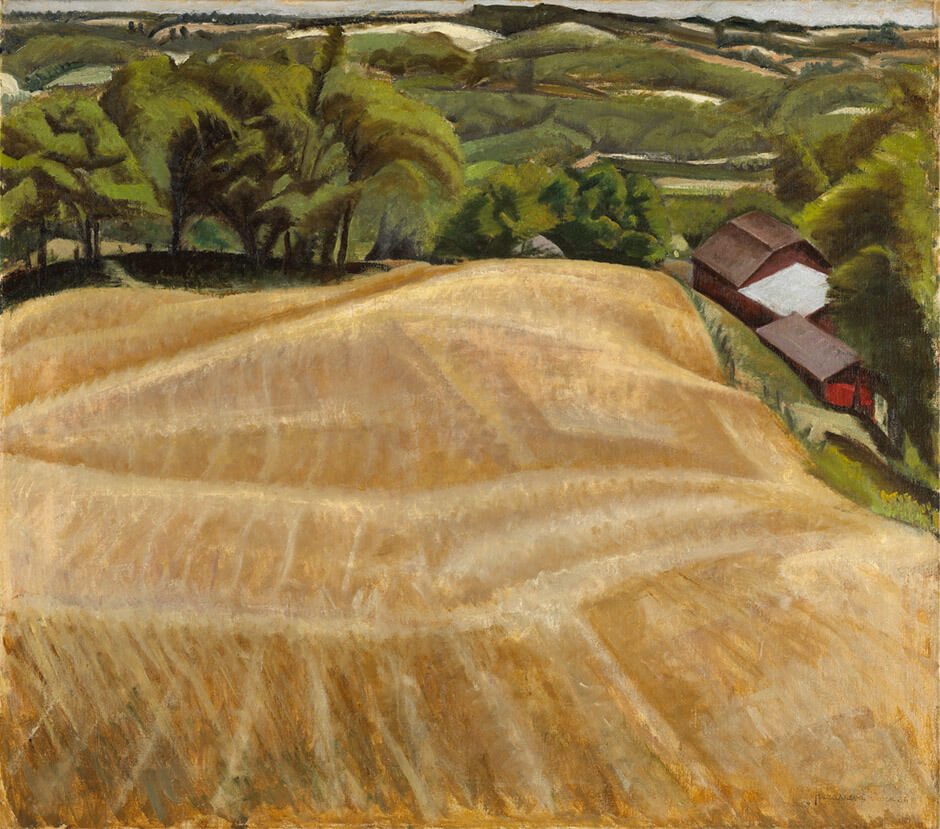When Clark first arrived in Canada from Europe, she complained that the art in her new country was all “landscape, landscape, landscape.” Ironically, in the years that followed she produced more landscapes than still lifes, portraits, or canvases with a social purpose—the works for which she is best known.
Still, Wheat Field, with its high horizon and viewpoint, is indebted to the theories of perspective held by her teacher Kuzma Petrov-Vodkin (1878–1939). Its cultivated field describes human intervention on the land, and Clark successfully brings her Russian training to a Canadian subject.
